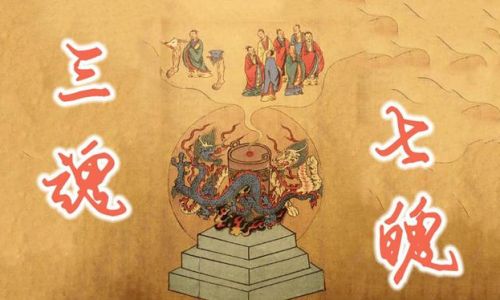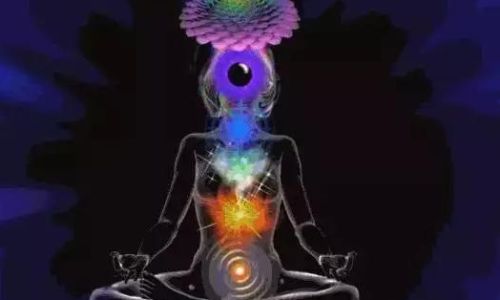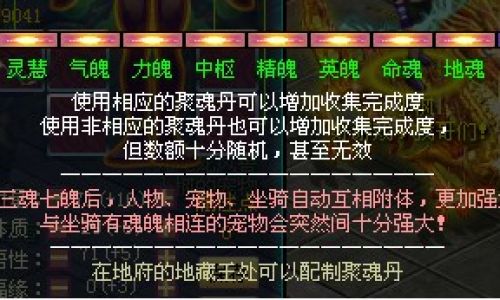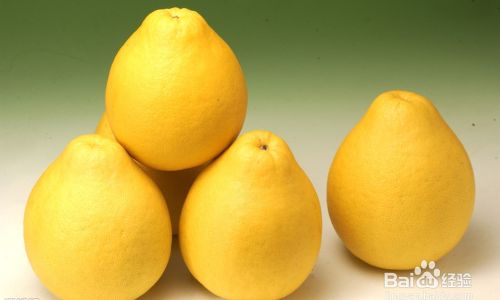Introduction

In the vast tapestry of human culture and belief systems, the concept of the soul has been a central theme across civilizations. From the Western notion of a singular, immortal soul that transcends the body to the Eastern concept of a multifaceted spiritual essence, the understanding of what constitutes the soul varies widely. Within the rich tapestry of Chinese philosophy and folklore, the concept of the “Three Souls and Seven Spirits” (三魂七魄, Sān Hún Qī Pò) stands out as a unique and intricate framework for understanding the human spiritual makeup. This article aims to delve into the origins, meanings, and implications of this ancient Chinese belief system, exploring how it has shaped the understanding of the human spirit and its relationship with the physical world.
Origins and Historical Context
The concept of the Three Souls and Seven Spirits is deeply rooted in Chinese Taoism and folk religion. Taoism, a native Chinese philosophy and religion, emphasizes harmony between the individual and the universe, promoting practices such as meditation, qi gong, and herbal medicine to cultivate inner peace and vitality. Within this framework, the human body is seen as a microcosm of the universe, with the soul serving as the bridge between the material and spiritual realms.
The exact origins of the Three Souls and Seven Spirits theory are difficult to pinpoint due to the lack of definitive historical records. However, it is widely believed to have emerged during the pre-Qin period (before 221 BCE), a time of great philosophical and spiritual inquiry in China. This period saw the rise of various schools of thought, including Confucianism, Mohism, and, notably, Taoism, which laid the groundwork for later philosophical and religious developments.
The concept of the Three Souls and Seven Spirits likely evolved over time, incorporating elements from shamanic practices, ancestor worship, and the belief in supernatural beings. As Taoism developed, it incorporated these folk beliefs into its broader philosophical system, providing a more structured and coherent framework for understanding the human soul.
The Three Souls
At the core of the Three Souls and Seven Spirits theory are the Three Souls, which represent different aspects of the human spirit. Each soul serves a distinct purpose and is believed to interact with the physical body and the external world in unique ways.
-
The Heavenly Soul (Tian Hun, 天魂)
The Heavenly Soul is the highest and most pure aspect of the human spirit. It is associated with the sky, heaven, and the divine. This soul is believed to be connected to the universal energy and is the part of the individual that transcends the physical body upon death. The Heavenly Soul is often seen as the seat of consciousness, wisdom, and enlightenment. It is believed to be the source of one’s innate goodness and moral compass, guiding the individual towards righteousness and harmony with the universe.
-
The Human Soul (Di Hun, 地魂)
The Human Soul is the aspect of the spirit that is most closely tied to the physical body and the earthly realm. It is associated with the earth, the body, and the material world. The Human Soul is responsible for one’s emotions, desires, and physical well-being. It is the part of the individual that experiences the joys and sorrows of life, and it is through this soul that one interacts with the physical environment and other people. The Human Soul is believed to be the seat of one’s personality and identity, shaping one’s thoughts, actions, and relationships.
-
The Life Soul (Sheng Hun, 生魂)
The Life Soul is the intermediary between the Heavenly and Human Souls, serving as the bridge that connects the spiritual and physical realms. It is associated with vitality, energy, and the breath of life. The Life Soul is responsible for maintaining the body’s functions and ensuring that the individual remains alive and healthy. It is through this soul that one’s life force is sustained, and it is believed to be the part of the individual that can leave the body during sleep or near-death experiences. The Life Soul is also thought to be the seat of one’s willpower and determination, driving the individual to pursue their goals and aspirations.

The Seven Spirits
Complementing the Three Souls are the Seven Spirits, which represent various facets of the human psyche and spiritual essence. Each spirit is associated with a specific bodily organ, emotion, or function, and together, they form a comprehensive system for understanding the human spirit.
-
The Spirit of the Heart (Xin Shen, 心神)
The Spirit of the Heart is associated with the heart organ and is believed to be the seat of one’s consciousness and mental clarity. It is responsible for regulating the emotions, particularly joy and sorrow, and is believed to be the source of wisdom and intuition. When the Spirit of the Heart is balanced, the individual experiences inner peace and clarity of mind.
-
The Spirit of the Liver (Gan Shen, 肝神)
The Spirit of the Liver is associated with the liver organ and is believed to be the seat of one’s planning and decision-making abilities. It is responsible for regulating anger and frustration, and when balanced, it enables the individual to make wise choices and act with courage and determination.
-
The Spirit of the Lungs (Fei Shen, 肺神)
The Spirit of the Lungs is associated with the lungs and is believed to be the seat of one’s sorrow and grief. It is responsible for regulating the breath and the flow of qi (energy) in the body. When balanced, the Spirit of the Lungs allows the individual to experience empathy and compassion, fostering healthy relationships and emotional well-being.
-
The Spirit of the Spleen (Pi Shen, 脾神)
The Spirit of the Spleen is associated with the spleen and is believed to be the seat of one’s thoughts and memories. It is responsible for regulating digestion and the absorption of nutrients, and when balanced, it enables the individual to maintain focus and concentration, fostering mental clarity and creativity.
-
The Spirit of the Kidneys (Shen Shen, 肾神)
The Spirit of the Kidneys is associated with the kidneys and is believed to be the seat of one’s willpower and sexual vitality. It is responsible for regulating fear and anxiety, and when balanced, it enables the individual to maintain discipline and self-control, fostering a strong sense of purpose and direction.
-
The Spirit of the Gallbladder (Dan Shen, 胆神)

The Spirit of the Gallbladder is associated with the gallbladder and is believed to be the seat of one’s courage and decisiveness. It is responsible for regulating one’s ability to make quick judgments and take action, and when balanced, it enables the individual to face challenges with confidence and bravery.
-
The Spirit of the Stomach and Intestines (Wei Chang Shen, 肠胃神)
The Spirit of the Stomach and Intestines is associated with the digestive system and is believed to be the seat of one’s nurturing and receiving abilities. It is responsible for regulating one’s sense of fulfillment and satisfaction, and when balanced, it enables the individual to receive and integrate new experiences and knowledge, fostering growth and development.
Implications and Practices
The concept of the Three Souls and Seven Spirits has had profound implications on Chinese culture and society. It has shaped the understanding of the human spirit, influencing practices such as meditation, qi gong, and acupuncture, which aim to cultivate inner balance and harmony between the spiritual and physical realms.
In Taoist practices, the Three Souls and Seven Spirits are often invoked during rituals and ceremonies to promote healing, protection, and spiritual growth. Meditation practices, for example, may focus on connecting with the Heavenly Soul to cultivate wisdom and enlightenment, or with the Human Soul to address emotional and psychological issues. Qi gong exercises, on the other hand, may emphasize the harmonious flow of qi through the body, nurturing the Seven Spirits and promoting physical health and vitality.
The concept of the Three Souls and Seven Spirits has also influenced Chinese art, literature, and philosophy. Many ancient Chinese texts, such as the I Ching (Book of Changes) and the Tao Te Ching, explore the relationship between the human spirit and the universe, drawing on the principles of the Three Souls and Seven Spirits to illuminate the complexities of human existence.
Conclusion
The concept of the Three Souls and Seven Spirits represents a unique and intricate framework for understanding the human spirit in Chinese culture. By dividing the soul into three distinct aspects and seven specific facets, this belief system provides a comprehensive and nuanced view of the human psyche and its relationship with the physical world. While the exact nature and existence of the Three Souls and Seven Spirits may remain a matter of debate and personal belief, their influence on Chinese culture, society, and spiritual practices is undeniable.
In a world increasingly dominated by materialism and scientific rationalism, the concept of the Three Souls and Seven Spirits offers a refreshing reminder of the complexity and depth of the human spirit. It encourages us to look beyond the physical realm, to explore the inner dimensions of our being, and to cultivate a deeper understanding and appreciation of our spiritual essence. By embracing this ancient wisdom, we may find new paths to inner peace, harmony, and fulfillment.





0 comments